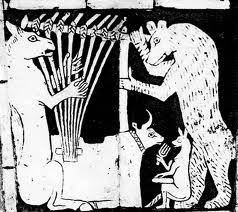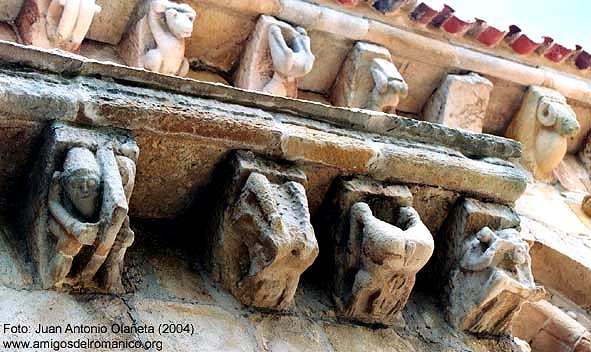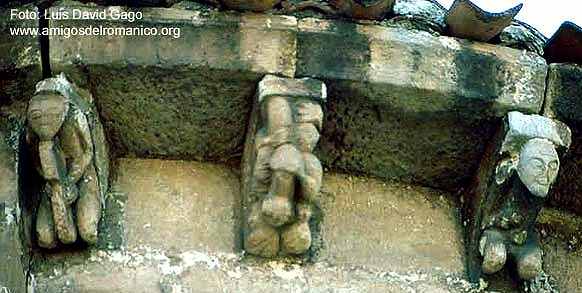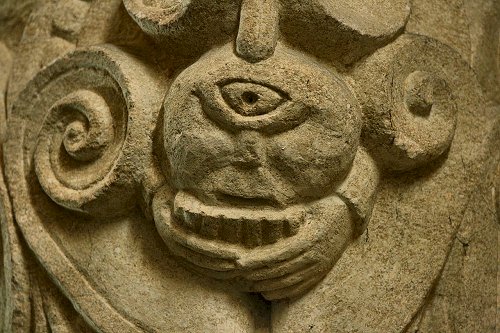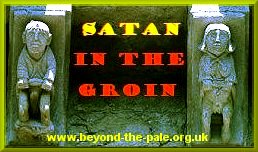Plaisance-sur-Gartempe (Vienne)
The façade of this fine church feature figures which condemn various
practices and behaviours.
On the corbel-table an ass plays the harp,
rote or lyre
(illustrating the sin of inappropriate ambition - for the harp was King David's
instrument) ,
while, below, a dancer raises her skirt suggestively.
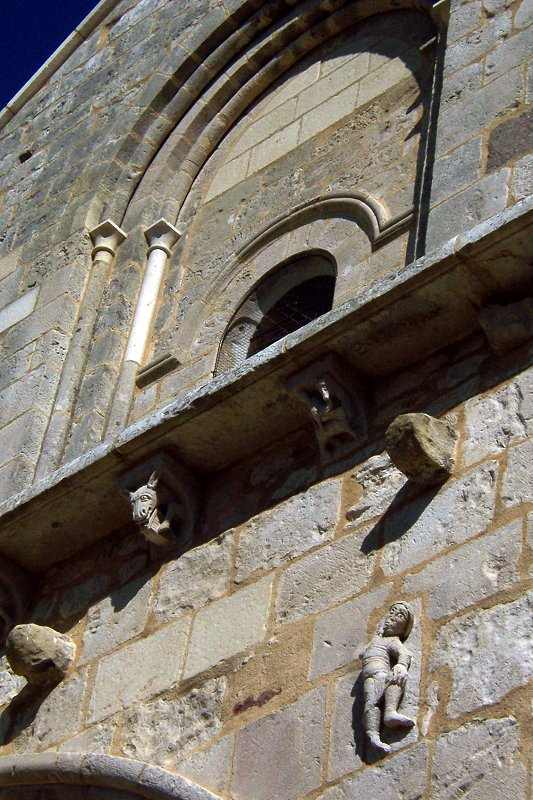
Another ass playing harp,
rote or lyre on a capital at Brioude
(Haute-Loire).
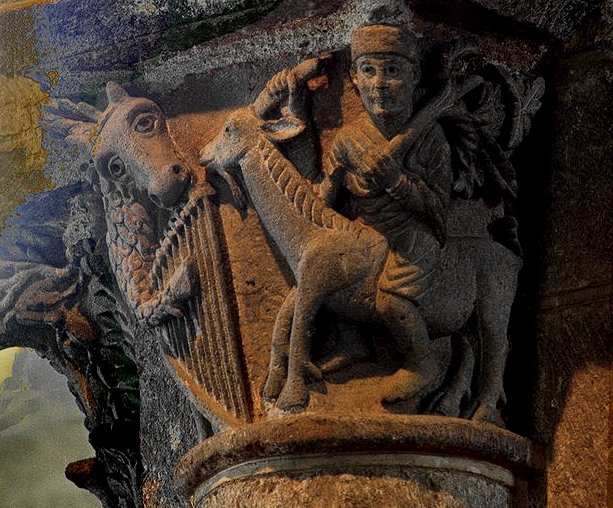
photo © Emmanuel
Pierre
Other corbels include (to the left of the donkey) a devil or baboon-faced
goat, an anal-exhbitionist contortionist,
and a fine sow or boar.
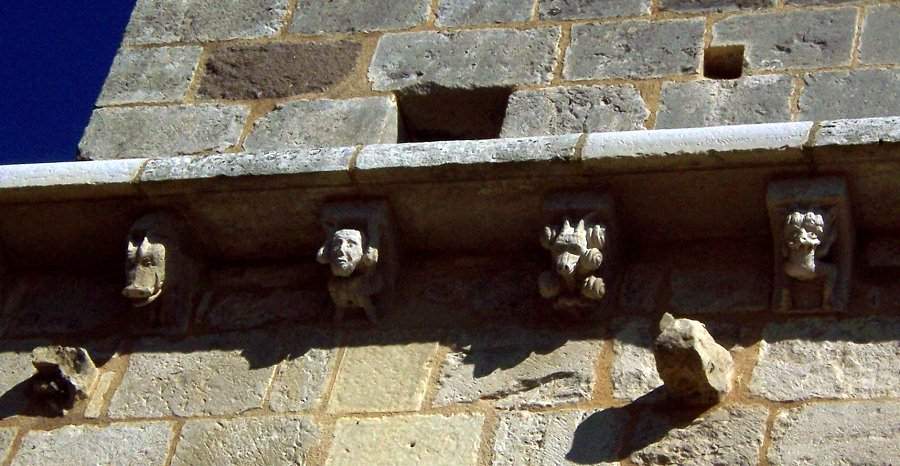
The ass-and-harp motif goes back several thousand years to Sumeria.
Note the bull-head on the sound-box of the harp.
